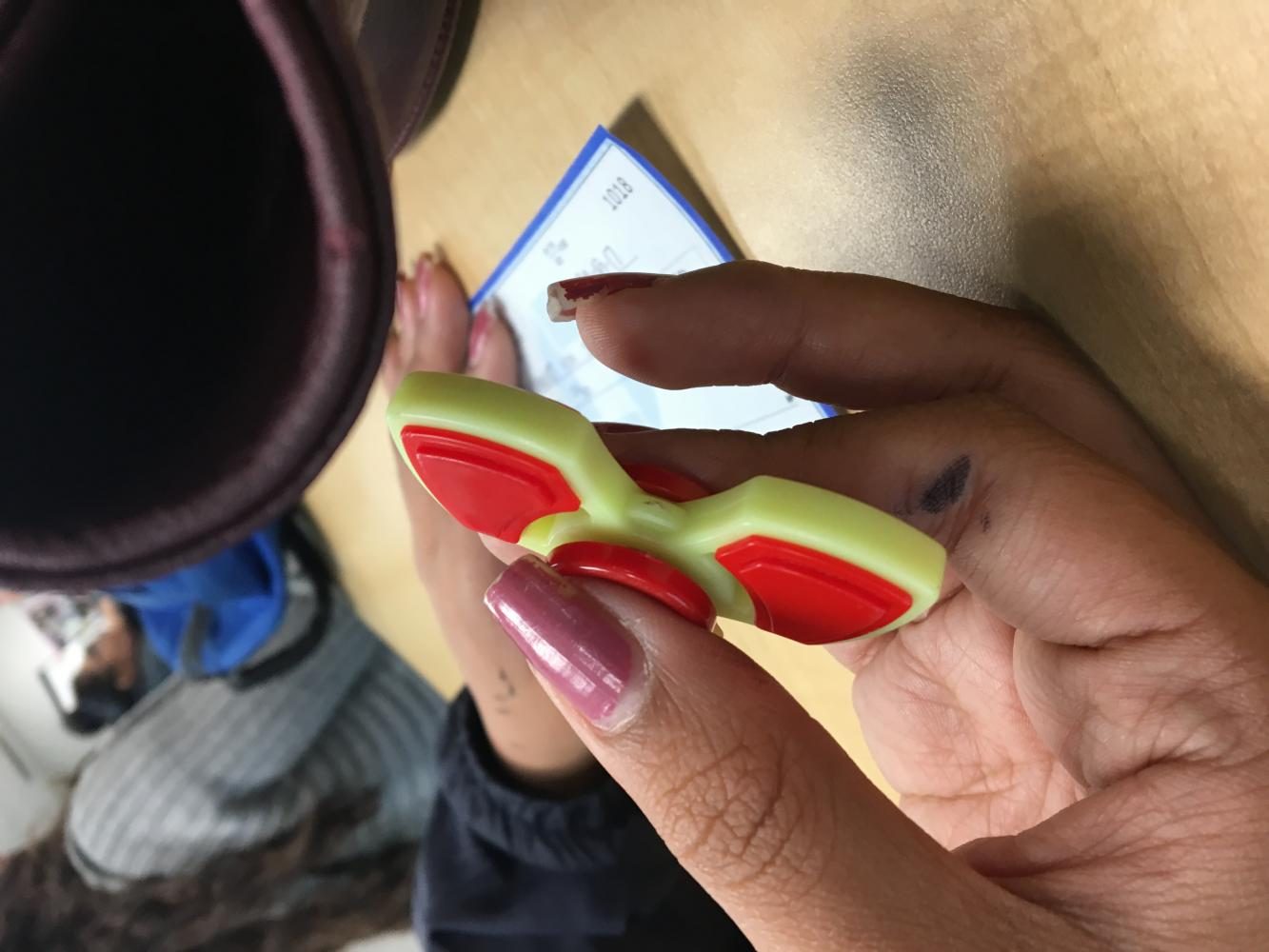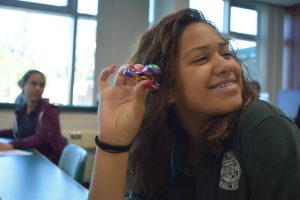Schools are correct to say “no” to fidget spinners
Student plays with fidget spinner
May 25, 2017
A small, palm-sized toy designed to relieve stress and help people focus has become the hot new toy that everyone must have. Fidget spinners are ball-bearing gadgets, either made of metal or plastic, that can spin between the user’s thumb and middle finger. They can cost as little as 99 cents to over $1,000 online and in stores.
The main purpose of fidget spinners is to help kids with ADHD to focus in class says Life Science. Yet, it isn’t guaranteed that all students will benefit from the spinners. According to MONEY, psychologists claim that there is “no scientific evidence to support the idea that they have therapeutic qualities.” Fidget spinners are nothing more than toys and a fad, and schools are correct to ban them.
This spring, these “stress relieving” gadgets have made their big debut on social media, but, despite their popularity, some schools across the country have banned the use of fidget spinners in the classroom. According to SpinnerList, the largest the database of all spinners, 32 percent of the top 200, both public and private, schools in America have banned fidget spinners. Why? They’re a distraction for students.
There has been a controversy among schools on whether or not they should permit the use of fidget spinners in classrooms. But, despite the possible benefits of the spinners, they should be banned. Instead of using them as tools to help with stress or ADHD, students use them as toys to pass the time.
Schools in the United Kingdom have taken part in prohibiting the use of fidget spinners in the classroom. A seventh-grade girl had written a letter to the head of her school, Churchill Academy in Somerset, about how disruptive the toys are in class, according to Telegraph. Shortly after, the headteacher, Chris Hildrew, banned fidget spinners.
In classrooms, students show off their techniques and tricks of using the spinners to others, hindering them from learning. They would attempt to spin the toy on their noses, attach it to pencils, trade them, or even flaunt it to the entire class, annoying teachers. Students would even attempt to throw a spinner at one another and try to catch it.
“Frankly, we’ve found the fidgets were having the opposite effect of what they advertise,” said Kate Ellison, principal of Washington Elementary School in Evanston, in and interview with the Chicago Tribune. Students were paying more attention to the toys than the lesson. Only recently has Washington Elementary decided to ban the fidget toys.
The unique designs and bold colors of the spinners attract more attention from the students in class. A student trying to learn would be interrupted by the loud obnoxious colors and designs. Students would also be bothered by the constant sound of fidget spinners spinning when trying to focus in class.
Washington Elementary wasn’t the only school that banned the distracting gadgets. The Chicago Tribune mentions that Prairieview School has also recently prohibited the use of spinners. Janelle Feylo, a mother of student that attends Prairieview, was “pleased to see a letter from the principal at Prairieview School announcing such a ban.”
Banning fidget spinners has its benefits. Parents won’t have to spend money purchasing fidget spinners for their kids to show off in class. Teachers won’t have to waste their energy arguing with their students to put away the spinners or have to listen to the annoying sounds they have. And the many students who seem to love these gadgets so much won’t be wasting their class time playing with the “toys” that distract other students from the teacher.




